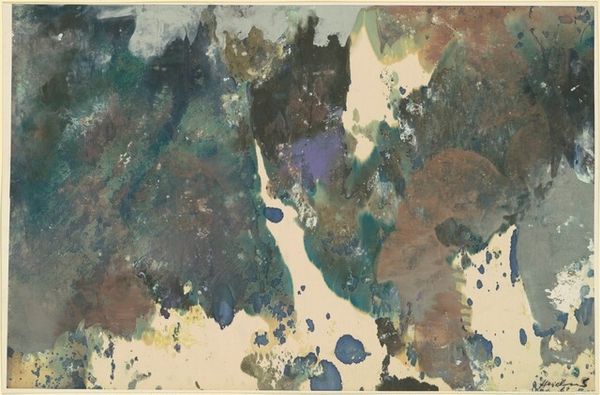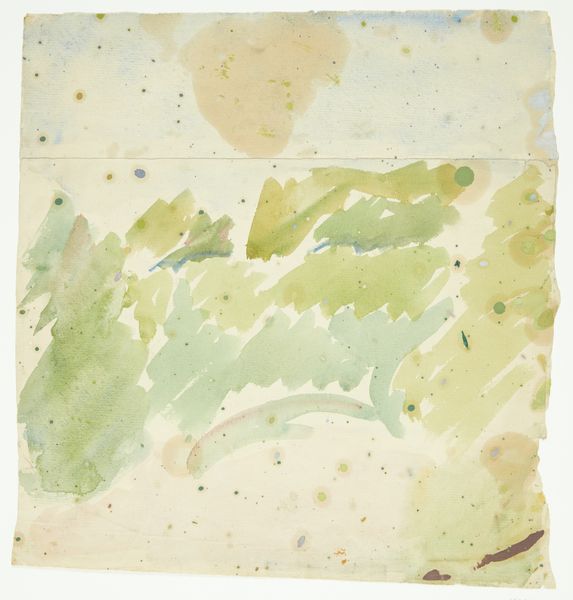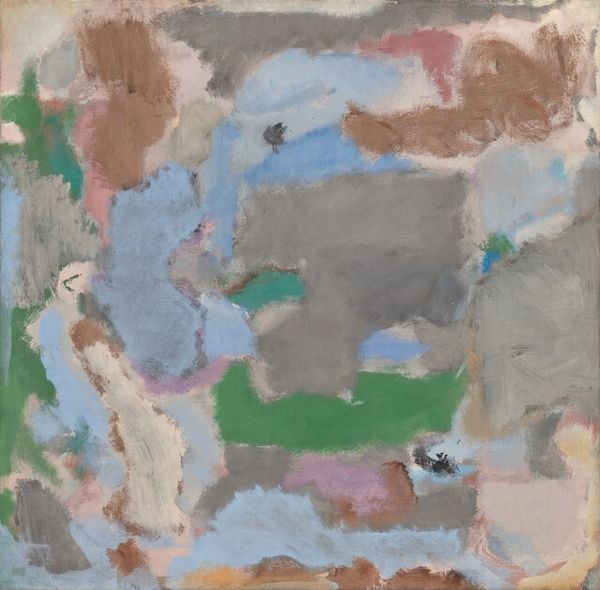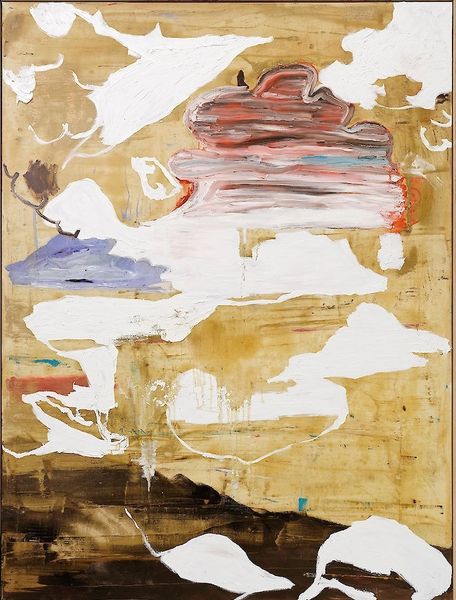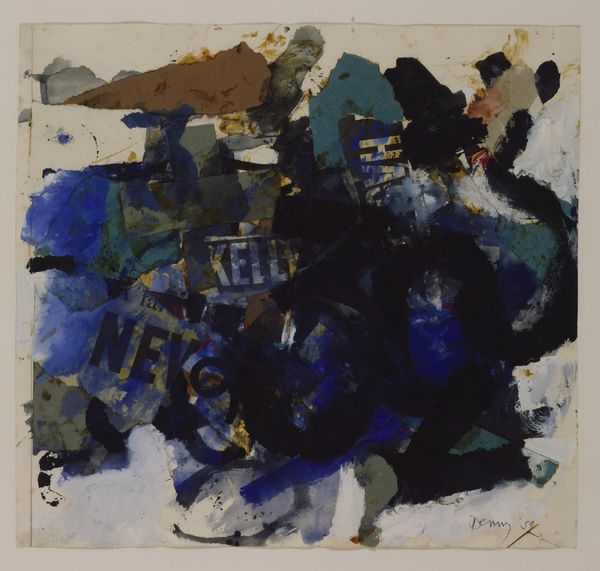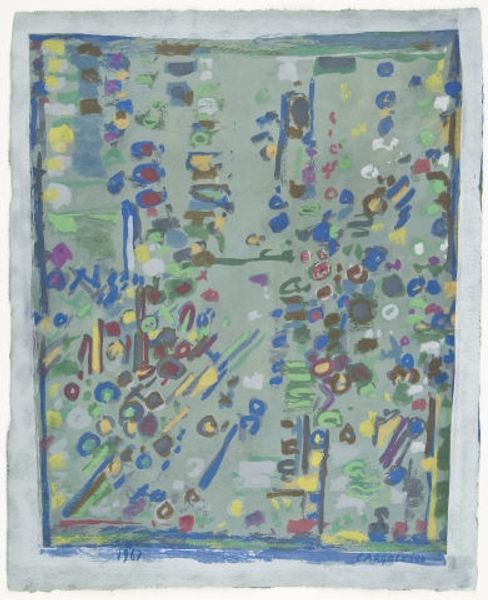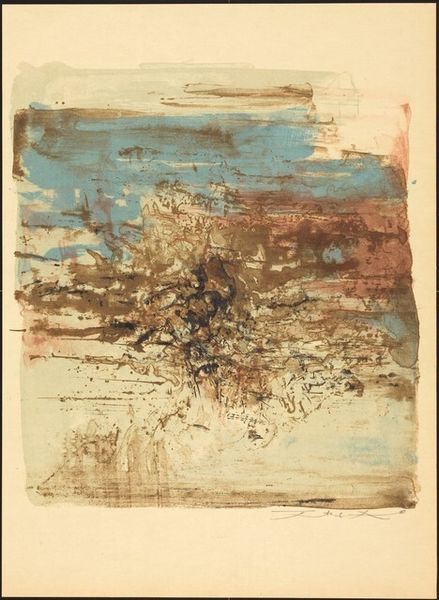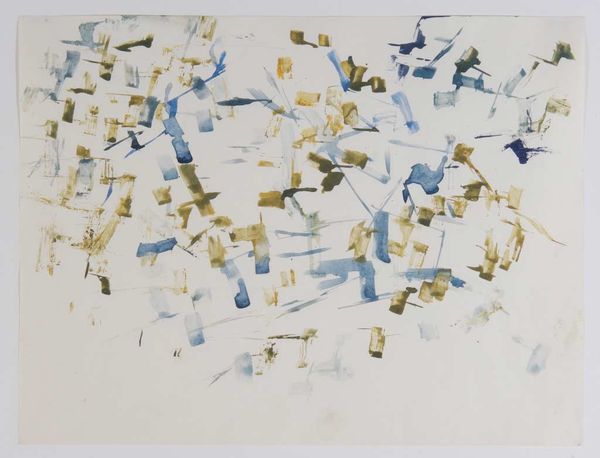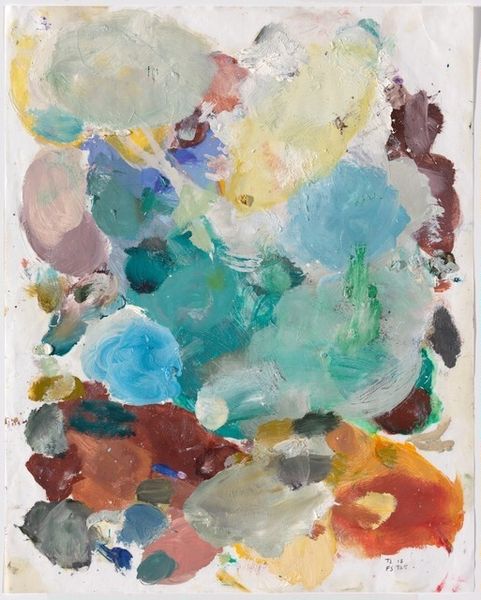
mixed-media, painting, watercolor
#
mixed-media
#
water colours
#
conceptual-art
#
painting
#
postmodernism
#
watercolor
#
abstraction
#
mixed media
#
watercolor
Copyright: Alighiero Boetti,Fair Use
Curator: Oh, it feels like peering through a kaleidoscope, doesn’t it? Almost dreamlike. Editor: Yes, dreamlike until you consider its grid. This is Alighiero Boetti's "Rane e specchi," made in 1980, a mixed media piece incorporating watercolour. The rough edges where it’s patched together – it immediately grounds that dreaminess in the tactile reality of the studio. Curator: "Frogs and Mirrors," how delightful! I can sense Boetti’s mind at play, layering images and ideas like geological strata. Each blot, each frog a fragment of consciousness… Editor: Look at those paper fragments closely, though. Each one has its own subtle watermark, its own texture. This isn't just about 'consciousness,' it’s about how Boetti orchestrated diverse material realities on a single plane. His production involved distinct workshops, creating a complex relationship between conceptual design and craft. Curator: Perhaps. But for me, it breathes with spontaneity. Those soft washes of colour feel as though they capture fleeting moments, those glimpses of what lies beyond our everyday understanding... it almost vibrates, doesn’t it? Like something living under a rock... Editor: Maybe. But look closer; it seems deliberately pieced together. See how some grids show one silhouette clearly and some distort it completely? This isn't accidental – it questions the 'authenticity' of art, by distributing labour in such a manner. Each repetition slightly diverges, mirroring the inherent instability in meaning. The charm resides not in ethereal depths, but in how he assembled and re-contextualized these motifs. Curator: You’re bringing me back down to Earth! Maybe you're right – the construction IS integral, a physical manifestation of thoughts intersecting, breaking apart, and reassembling. Yet, I keep circling back to those playful pops of colour... Editor: Well, those “playful pops” likely derive from commercial pigments, bound together by glue, laid on pulped sheets. Not a judgement, but something important about his method to think about as part of the wider post-war consumption and commercial expansion that formed his artistic horizon. Curator: It’s funny, how staring at something so carefully can reveal completely different things! It goes without saying the mirrors reveal a distorted reflection – maybe it all boils down to how we wish to frame that truth. Editor: Precisely. And perhaps the real trick, then, lies not in deciphering the ultimate "meaning", but to stay alert to the mechanisms—both tangible and invisible—that give it substance and definition.
Comments
No comments
Be the first to comment and join the conversation on the ultimate creative platform.
